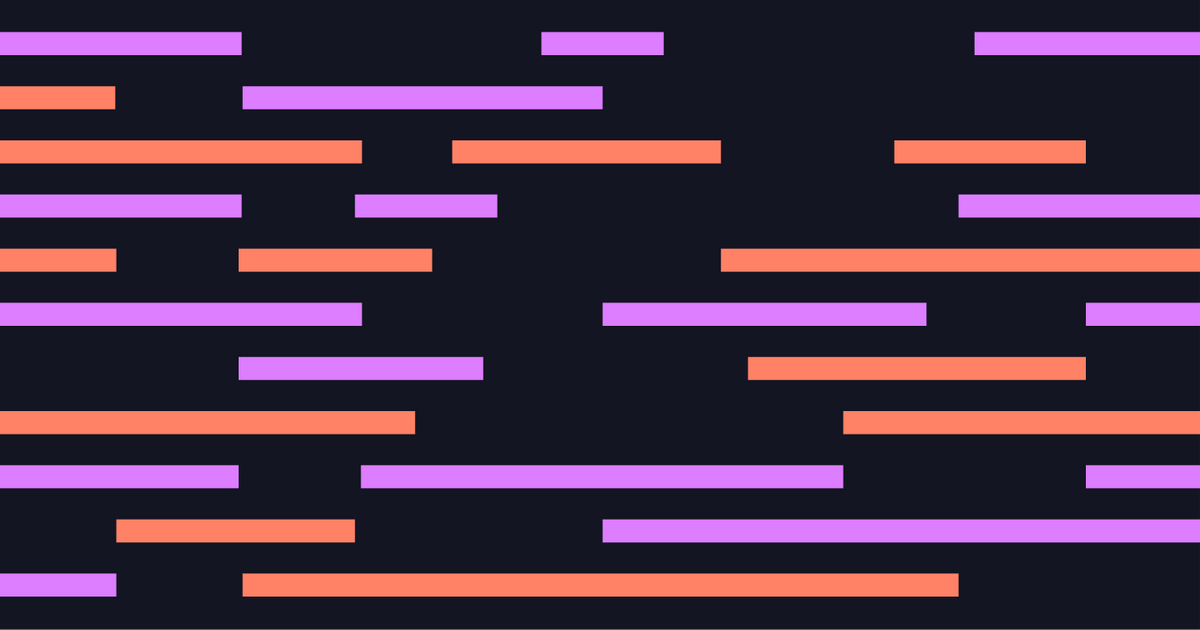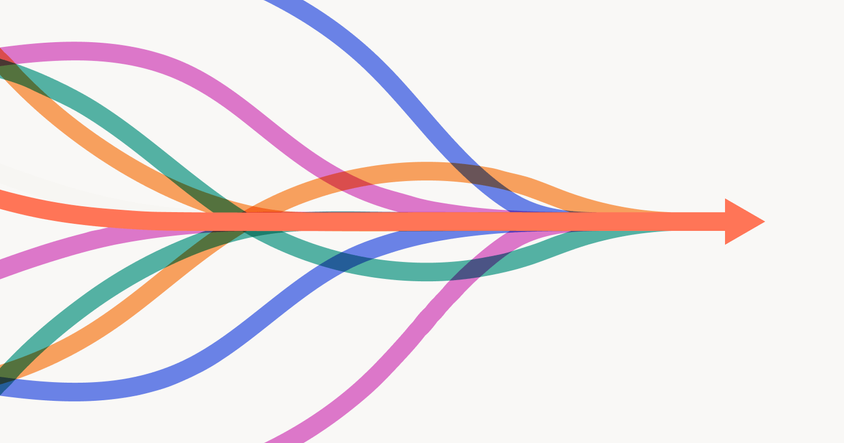Make Your Labeling Team More Efficient With Label Studio

Data labeling is a critical part of any machine learning or AI initiative. Without high-quality labeled datasets, the accuracy of your trained models in production will suffer. Data labeling is also costly, and whether you are manually labeling your data or using a combination of automated and manual labeling, there are key aspects to any dataset development process that will improve quality while helping you manage costs. From the individual user to someone managing multiple projects, Label Studio will improve the efficiency and quality of your labeling operations at scale.
Label Studio provides the perfect blend of automation and streamlined workflows for human review to make your data annotation efforts more efficient, while maintaining the highest bar for quality. By streamlining these processes, you can do the important work of sourcing your data for models and not managing tedious low-value tasks. In this article, we’ll share advanced techniques to get the most out of Label Studio and drive more efficiencies into your labeling process.
Simplify Project Setup and Labeler Workflows
Label Studio has prebuilt templates and custom templating for fast setup and the ability to specialize for your specific needs. Label Studio templates, including the latest templates designed for Generative AI, provide predefined labeling interfaces for particular use cases and data types. You can use templates to start labeling immediately or as a starting point to build a fully-customized labeling interface for your data labeling project.
According to Andrew Herington, Data Science Program Manager at Outreach, “One of the things that impressed us the most about Label Studio was the ability to craft UIs on the fly. Before Label Studio, we had too much dependency on our data scientists. We were wasting their time asking for help just to make simple changes to our labeling tooling. Label Studio allows the annotation team to be more self-serve. Now, we get a request, do the configuration ourselves, and get a data set without needing to involve the data science team. It’s much more efficient.”
Use hotkeys to speed up labeling
Label Studio’s hotkey feature facilitates a seamless user experience, enabling users to effortlessly switch between different tasks and annotations within Label Studio. It empowers users to work with ease and flow, significantly increasing labeling throughput. Label Studio has both a general set of hotkeys that work irrespective of the data type, along data type-specific hotkeys for video, time-series, and video labeling tasks. But beyond that, you can also configure your own custom hotkeys or change the existing hotkeys used for specific actions using an environment variable.
Reduce Manual Labeling Work Using Machine Learning Automation
Integrate automated pre-labeling or auto-labeling techniques into your data labeling pipeline. This approach involves leveraging existing models or rule-based systems to assign labels to a large portion of the data automatically. While this method may not be perfect, it can significantly reduce the overall labeling effort by minimizing the amount of manual work required. Human labelers can then focus on verifying and correcting the pre-labeled samples, leading to faster and more efficient data labeling.
You can set up a machine learning model as a backend to Label Studio so that you can dynamically output and consume predictions as labeling occurs. The Label Studio community has crafted a number of guides to help you get started, including an Introduction to ML with Label Studio, several domain-specific tutorials that give deeper examples of how to warp custom machine learning model code with the Label Studio ML SDK, or a full collection of working code examples that give you a direct path to integrating popular machine learning frameworks such as PyTorch, Tensorflow, and Huggingface, into your data-annotation pipeline.
In addition to predictive annotations, the Label Studio ML SDK makes it possible to dynamically update your models with new annotations with a customizable training call. This means you can keep your model up-to-date with the latest data as it is annotated by your data-labeling team, helping you to build a more efficient ML data pipeline. However, if you intend to employ an ML backend for predictions, you must not mix prediction calls with training calls.
Jimmy Whitaker has a great tutorial on how he does this using GPT-family models and Label Studio. Using just a few lines of code, he demonstrates how you can give your annotation team a head start on the labeling process using the latest and most advanced LLMs.
Advanced technique: Active Learning
Implementing an active learning strategy can significantly enhance efficiency in data labeling efforts. Instead of randomly selecting data for labeling, you can use machine learning algorithms to identify the samples that will have the greatest impact on model training. These algorithms can rank the unlabeled data based on uncertainty or diversity measures and prioritize the labeling of samples that are most likely to improve the model's performance. By labeling only the most crucial data points, you can achieve higher efficiency while maintaining or even improving labeling quality.
Using the open source Community Edition of Label Studio, you can manually sort tasks and retrieve predictions to mimic an active learning process. Or you can use Label Studio Enterprise to build an automated active learning loop with a machine learning model backend.
- If you want to change the behavior of the active learning loop, you can make manual changes.
- Customize the prediction score produced by the model by modifying the inference call. See "Make predictions with your ML backend" for details and example code.
- To change the version of the model used to show predictions to annotators, update it in the machine learning settings. See how to choose which predictions to show to annotators.
- If you want to delete all predictions after your model is retrained, see how to delete predictions.
- If you need to retrieve and save predictions for all tasks, see the recommendations for retrieving predictions from a model.
Optimize Your Data Labeling Throughput
Label Studio has some powerful tools to help you ensure that you’re making the most of your labeling resources.
Drill into the data that matters with Enterprise Dashboards
Our latest improvements to Label Studio Enterprise are designed to give data labeling team managers the leverage they need to complete their labeling initiatives and unblock data science teams. With the introduction of Project Performance Dashboards, adjustable key performance indicators (KPIs), and a new date/time component, we're making tracking and optimizing your data labeling projects easier than ever.
- Gain deeper insights into projects & simplify reporting with a new interactive interface. Our new dashboards interface and key performance indicators provide a holistic view of your project's progress while also offering granular insights into the status of tasks, annotations, reviews, and labels. This feature allows you to identify bottlenecks and outliers, enabling optimal resource allocation and time management.
- Track the metrics that matter with customizable KPI cards. With our adjustable KPI cards, you can decide which metrics you want to have front and center. Whether it's the average time taken to label a task or the number of remaining tasks in the project, our KPI carousel provides an easy way to track progress and trends over time.
- Identify and mitigate performance bottlenecks & quality issues with granular charts. Discover data quality issues with customizable charts and adjustable date ranges. Get insights into project performance data including frequently skipped tasks, review velocity, and label distributions over time, to identify and remedy issues with unbalanced datasets, annotator training, or resource allocation.
Accelerate your labeling at scale
If you’re collaborating with a team of 5 or more labelers, or labeling hundreds to thousands of data tasks each year, you may want to consider our enterprise-grade platform. Save time and increase the throughput of your labeling team so that you can get models into production faster. A few of these features are exclusive to our Enterprise platform, which also comes with support from our team of experienced data science professionals to help guarantee your success.
Label Studio is trusted by over 250,000 machine learning practitioners, data scientists, and companies like ScoutBee. Using Label Studio Enterprise, they have seen a 20x reduction in time to label, train and maintain models.
Want to try some of these Enterprise features for yourself? Check out our free trial!


